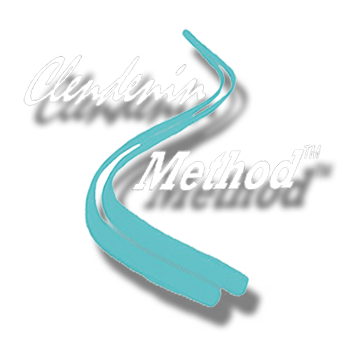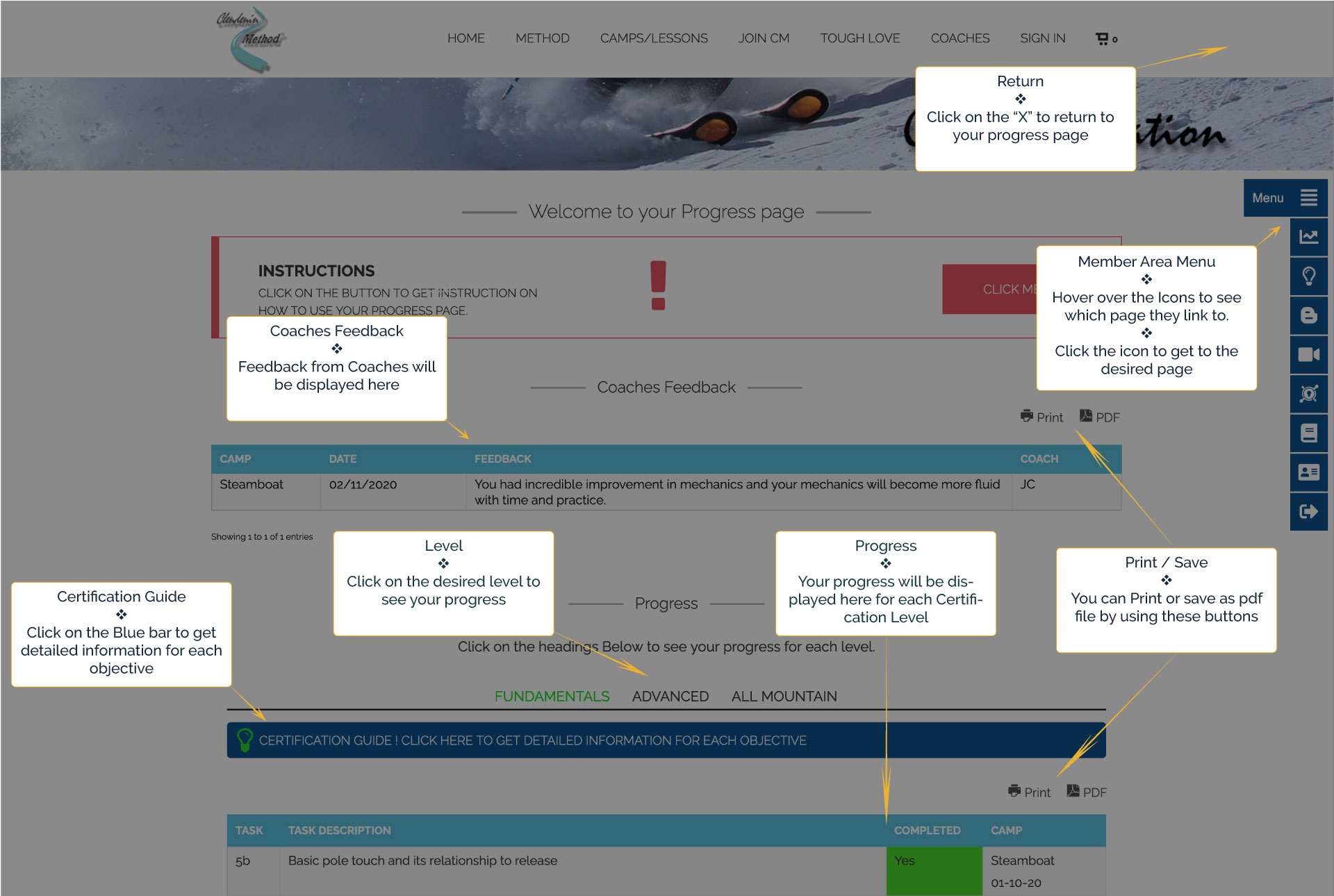The Clendenin Method Book
Clendenin Method:
Four Words for Great Skiing
The Clendenin Method book and teaching methodology evolved purely from survival. When I arrived back in Aspen fourteen years ago, I was nearly run over by out-of-control skiers on more than a few occasions on groomed runs. I realized if I were to survive in this mountain paradise, I better get myself and students to the part of the hill where only 20% of skiers go, off-piste. My background as a world champion freestyle mogul skier didn’t hurt my quest.
The next challenge was to develop a teaching system that was simple and functional for every level of skier and would allow students and instructors alike to utilize the same movements to safely ski the whole mountain.
As my hero and friend Jean-Claude Killy once said: “the way to become a great athlete is to study them” made sense to me. I decided the Clendenin Ski Method would be modeled after the technique all great skiers in all disciplines have used forever.
The technique based on 4 words -- DRIFT, CENTER, TOUCH, and TIP -- is utilized by all accomplished Alpine, Telemark, Freestyle, and Extreme skiers as well as our 5- to 85-year-old students.
In the book we study and share in great detail, the enemy of all skiers, the dreaded stem turn. I call it the skier’s flu. Once cured, most anyone, any age can safely learn to dance on the whole mountain.
While writing the book I shared drafts with old colleagues whom I humbly say endorse the book: Stein Eriksen, Jonny Mosely, Glen Plake and Aspen legend Cal Cantrel, I thank you.
Description
138 pages
More than 200 photographs
Review by Peter Sheldon
"John Clendenin Is the Pied Piper, and Peter Pan," by Peter Shelton
Ouray Watch, November 19, 2008Former freestyle World Champion John Clendenin is irascible and rrepressible. Even in his fifties he hasn't stopped jiving and effusingand holding forth on the best ways to teach and learn skiing.He sent me an online link to his new book, Clendenin Ski Method, Four Words© For Great Skiing. It's not quite ready for publication; hewanted feedback from a number of compatriots. His email started out: "All-time greats [more jive]... Please enjoy and report back or you
will never write again and [worse]."In ski teaching, perpetual teenage exuberance can be an asset. So is having a way with words, and Clendenin is blessed there, too.You may have noticed that John copyrighted Four Words©. (They are Drift, Center, Touch, and Tip, and we'll get back to them in a minute.) There are more; the text brims with catchy phrases, some copyrighted and some not: The Most Important Moment©, The MostImportant Move©, The Kingdom of Un-groomed, The Skier's Flu, and my favorite, The Love Spot©. This is the point in a turn when neither set of edges is engaged, when Touch and Tip are about to happen as one turn ends and a new one is born. Clendenin describes it as the edgeless moment, however fleeting, that all great skiers sense. Stemmers and hoppers don't feel the love. Stemmers and hoppers are suffering from Skier's Flu, the root of all evil, the greatest impediment to flow down the mountain.
Skiing is a sensuous sport, for sure, and as an icon of freestyle's golden era in the Swinging Seventies (I think I'm too late for copyright there), Clendenin has earned all the innuendo he wants. The book is fun, it reads playfully and evocatively, and if you know what he's talking about, if you've experienced the drifting, floating Love Spot© moment, the terminology will likely stick with you.
Of course, the author is also trying to reach people who may not know what he is talking about. Yet. Clendenin's students at well-attended clinics in Aspen and Portillo, Chile, are serious about achieving flow. And he is serious about imparting its secrets. With the Four Words©, he has done thoughtful work breaking down the component parts of any good turn.
By Drift, he means the shaping of a turn once you are in it, the edging and pressuring of the skis in order to tighten an arc or open it up,
to carve more or skid more, as needed. To Center, in Clendenin's lexicon, is to manage your balance, fore and aft, side to side, over your four edges, especially where you are setting up for the new turn. Touch is the simplest to explain: it's the timing mechanism of the pole plant, in concert with positioning the upper body. Tip means tilting the skis on or off their edges, but mostly on edge, past or through (or post-caressing) The Love Spot© and into the next Drift phase.On the hill with John in Utah a couple of winters ago, I got the terms confused. Drifting and The Love Spot© wanted to merge in my mind, and it took me longer than it should have to know what he meant by Bottom Ski, Top Ski. But the book has helped to clear these things up (as it has added to the bedroom analogies). It has also made me realize just how far ahead of the curve John was in
promoting four-edge, two-footed, perpetual-flow skiing.The real beauty of the book to me is the way the new-school stuff cleaves, seamlessly, with classic truisms. He calls these timeless tips Keys to the Kingdom and invokes some of the greats: Jean-Claude Killy's natural, upright stance; Scotty Brooksbanks' subtle feet; Stein Eriksen's functional, narrow stance. Some are clichés - monitoring hands by pretending to carry a breakfast tray; stacking bones for skeletal efficiency and muscle relaxation; turning up the bump for speed control in the moguls - all of them are fundamental, and beautifully illustrated.
This is a book of passion and wisdom by a guy who communicates his own with gravity and its opposite - wait for it - dancing with gravity. John Clendenin loves the turn, and the words he's found to describe the turn. He even enlisted Neil Young for a quote: "Don't let it bring you down/It's only castles burning/Find someone who's turning/And you will come around."





